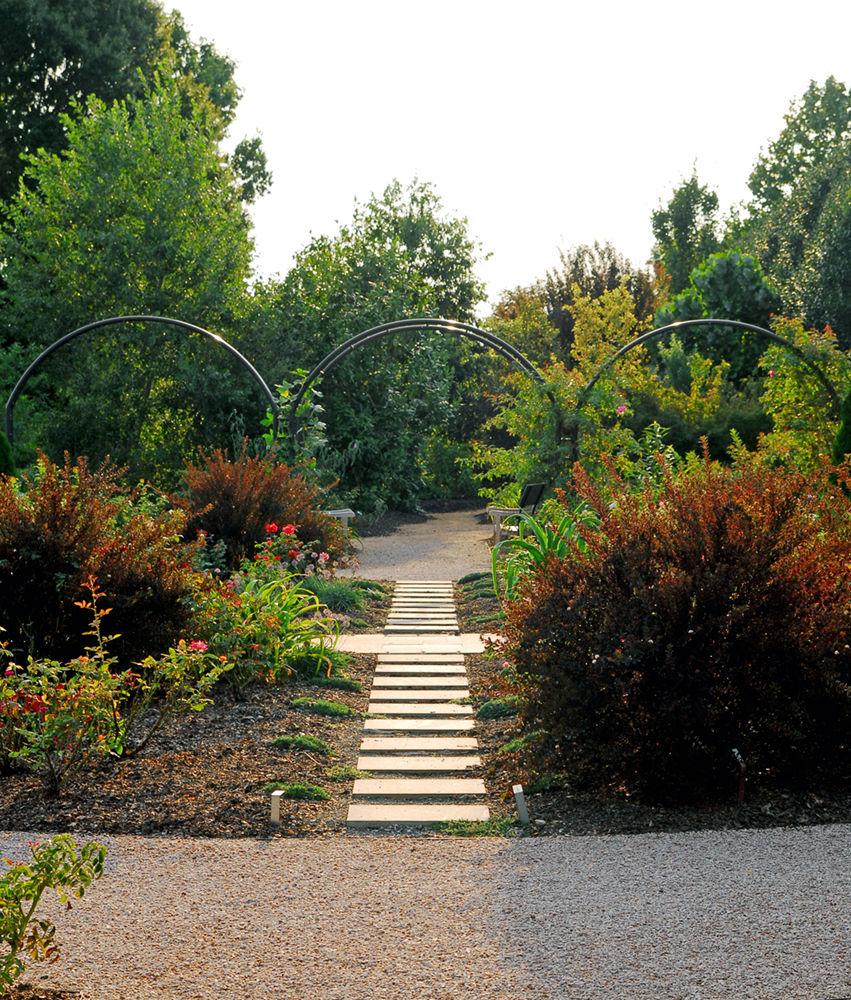Walking into the J.C. Raulston Arboretum is like stepping into another world filled with flowers, local and international plants and landscapes designed with purpose. Established in 1976 by James Chester Raulston, this nationally acclaimed garden aims to introduce, display and promote plants that diversify the American landscape.
Arlene Calhoun, the assistant director of the J.C. Raulston Arboretum, describes more of the history behind the garden.
“When J.C. moved into the area from Texas, he noticed that the plant palette was very limited, and that all the homeowners were kind of using the same kind of plants in their home landscape,” Calhoun said. “And perhaps they weren’t the best plants to use. He actually started introducing different types of plants and using the space here at the arboretum to trial plants from all over the world.”
Calhoun said that Raulston did a lot of plant collecting trips internationally. The plants in the arboretum have labels that show their regional diversity and the landscapes that are suited to their needs. Visitors can experience a butterfly garden, rose garden, Japanese garden, rooftop terrace, lath house and more.
“The garden is really built on his original mission, which was to increase the palette of the landscape plants in the southeast particularly,” Calhoun said. “He actually worked with nurserymen and gave away plants. From my understanding, he was a very generous man and gave away a lot of plants to even his volunteers, to our members, to everybody just to get people trialing these plants in their garden.”
The J.C. Raulston Arboretum is also a nonprofit organization responsible for much of their own funding, according to Calhoun. The arboretum is supported by a large volunteer base and a year-based membership. It also accepts general donations.
“That’s one of the things we take great pride in,” Calhoun said. “We’re a very small staff and our garden is open every day, 365 days a year, and it’s free to the public. That’s the other thing we take great pride in — providing a beautiful green space that anybody in our community can come and use.”
Calhoun said there are over 7,000 different kinds of plants growing in the arboretum. The space is a research garden that’s used for things like plant ID classes through NC State. Lectures are given by horticulturalists and industry professionals to discuss a variety of topics appealing to both professional and home gardeners. Workshops and demonstrations offer hands-on learning taught by arboretum staff and other industry leaders.
“We do have a lot of programming,” Calhoun said. “Our children’s programming has really taken off in the last five years. We don’t necessarily have a children’s garden per se, like you might see in most botanical gardens, but we prefer to kind of take the approach to kind of try to educate kids in a fun way about science and horticulture specifically.”
The support of pollinators year-round through pollinator gardens is another important consideration in the arboretum. Pollinators are so important in daily life for producing food and for pollinating the other plants, according to Calhoun.
“Our director — every time I hear somebody ask him about a pollinator garden, he tries to make sure people understand the importance of planting a year-round garden,” Calhoun said. “You can come out here in the dead of winter and see pollinators on our winter blooming plants, as well as you could in the spring, in the summer and typical times when you might expect to see a lot of the insects pollinating.”
The J.C. Raulston Arboretum offers visitors a peaceful getaway year-round without any cost to visitors.
“It’s like a hidden gem of [NC State],” said Melissa Novitsky, a fourth-year studying computer science. “It’s gorgeous and informative and an overall nice place to go peacefully escape for a bit. If you haven’t checked out the arboretum, I highly recommend taking a break one day and strolling through nature right in our backyard.”
Calhoun said landscape plants in the arboretum are taken care of similarly to how a homeowner might care for them. If the visitors can take away anything from their experience of the garden, it’s that growing these diverse set of plants is possible.
“I think it’s important for people that visit to see that ‘I can try these kinds of plants in my space and not be intimidated by learning new plants and trying it,’ whether you’ve ever gardened before or not,” Calhoun said.













